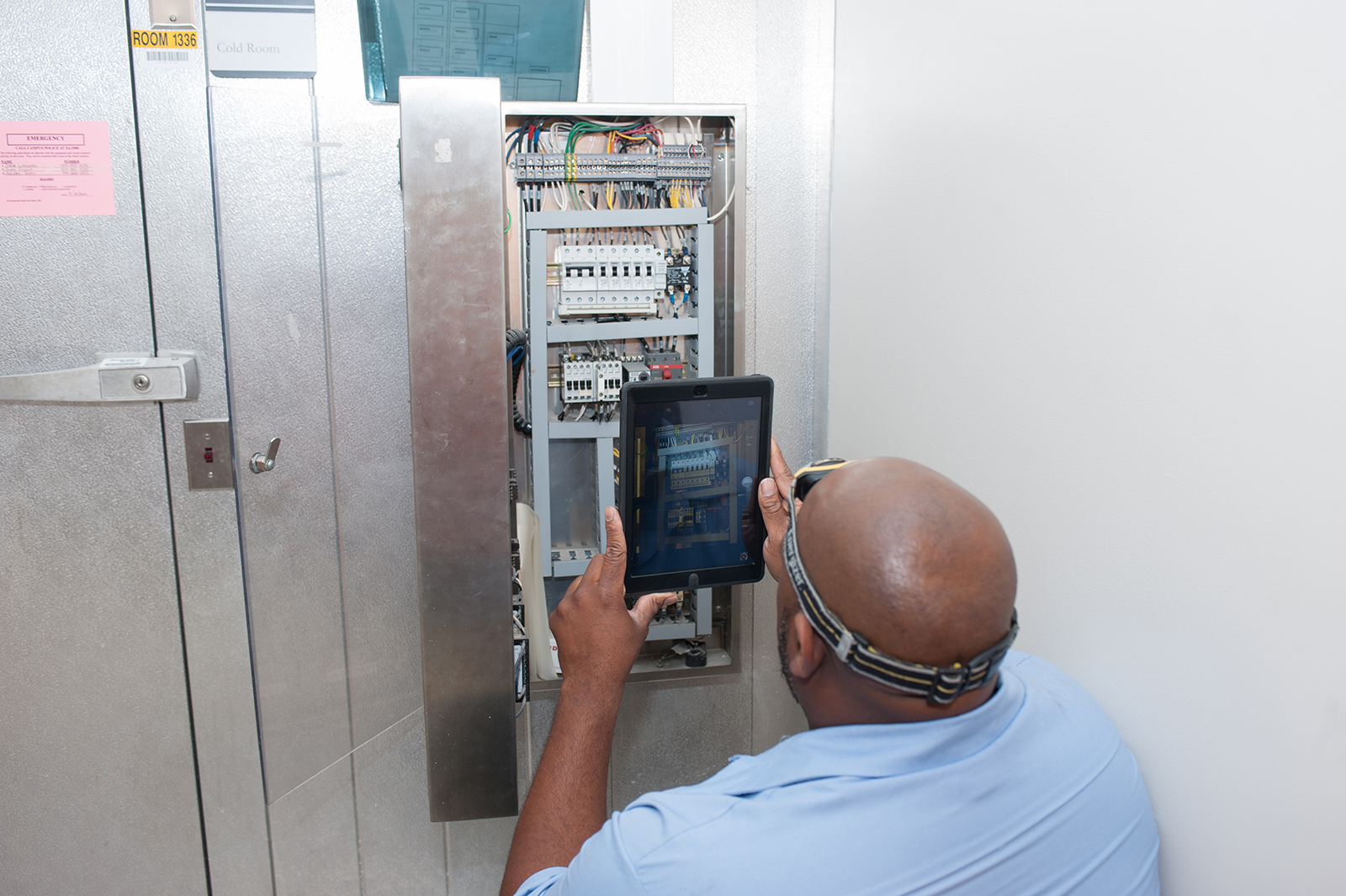
Three initiatives demonstrate efforts in this department to reduce waste and optimize operations.
Facilities Management is known for pioneering sustainable approaches to campus operations through long-term and large-scale initiatives, such as Green Cleaning and Game Day Recycling, but the innovative projects don’t stop there.
Some sub-units have even incorporated sustainable alternatives into their everyday operations. Three separate initiatives in departments within Operations and Maintenance have succeeded in saving more than 160,000 sheets of paper annually — or 19 trees per year — as well as thousands of dollars in ink and human capital.
In Building Services, eco-friendly cleaning practices earned this department recent Green Seal Certification. But other efforts have demonstrated that this eco-mindedness is truly pervasive. Operations Manager Willa Chatman brought one of her personal sustainable practices to the workplace, proposing that all 12 custodial zones use flash drives to store drafts of annual reviews and other in-house documents such as employee vacation requests and custodial service forms.
“I’ve been storing my own documents this way since 2012, and I thought to myself, ‘Why don’t I bring this method into work?’ I want to encourage the rest of the Tech community to decrease the amount of paper they use,” Chatman said. “By implementing this approach, we have the power to save more trees — and eventually an entire forest.”
Printing documents is now considered a last resort for the department. As a result, paper usage has gone from two cases of paper per month (and almost one case each week during the annual review season) to one case about every six weeks. Chatman hopes the use of paper-saving methods will continue to increase until the department is completely paperless.
Sonny Cody, foreperson for Georgia Tech’s Lock Shop, also wanted to reduce paper consumption within his office. He reached out to Facilities Information Technology Support’s Pat Ficenec to discuss how to incorporate technology into the their day-to-day operations to do so. The collaboration led to the idea for two large wall-mounted display screens that would reduce the need for printing documents and keeping hardcopy records.
“Each Operations and Maintenance shop or area has different workflow processes and different technology needs, but it’s still possible to implement resource-efficient solutions that will produce immediate and long-term savings of valuable resources like paper and energy,” Ficenec said.
After comparing the cost of printers, paper, and toner relative to the cost of procuring the energy-efficient monitors and a new computer, Cody found that the new technology, despite its initial cost, would save the department money in the long term as well as have a positive environmental impact. Once Ficenec and Cody received approval from their respective supervisors, the two put the plan into motion, setting a precedent for resource-efficiency efforts and cross-departmental collaboration.
The final paper-saving initiative sprouted from a desire to optimize operations in Building Maintenance by replacing outdated project-tracking methods. Organizing preventative maintenance updates and shop stock documents while ensuring all work orders are being completed in a timely manner is a difficult task using paper copies. The solution? A software program that provides a streamlined system for organizing and distributing all data and documents. By deploying iPads to maintenance employees so they can take advantage of this application, the entire five-team Building Maintenance unit is now able to efficiently track all preventative maintenance, work orders, and other job requests in real time. The electronic database also allows technicians to reference maintenance manuals and updates quickly and easily while out in the field. The tracking system will save the department 76,000 sheets of paper annually.